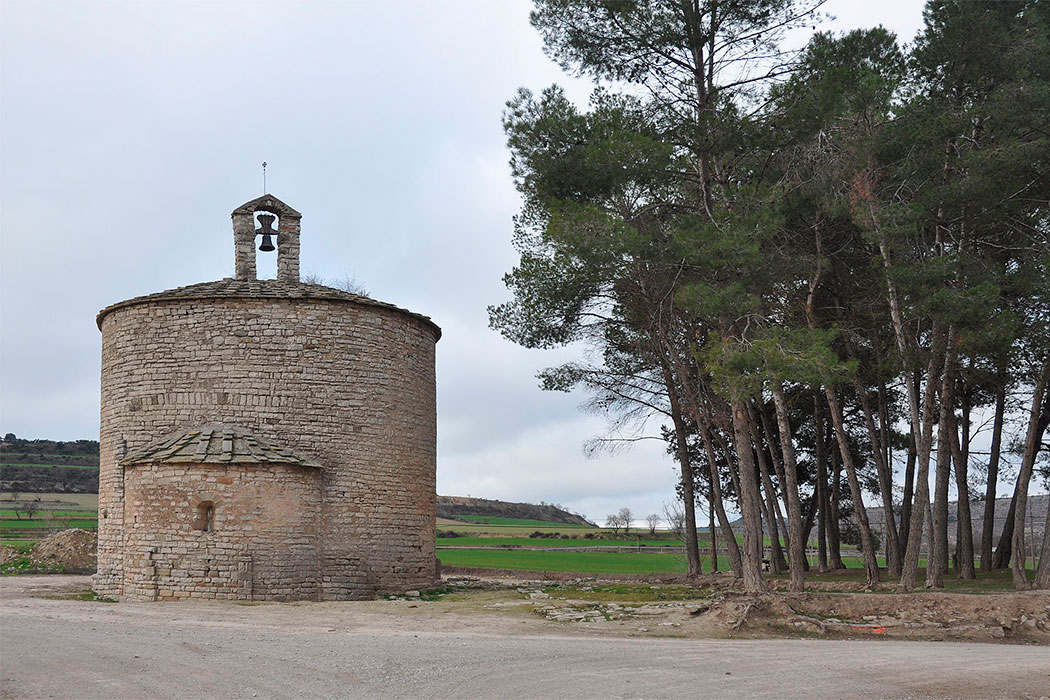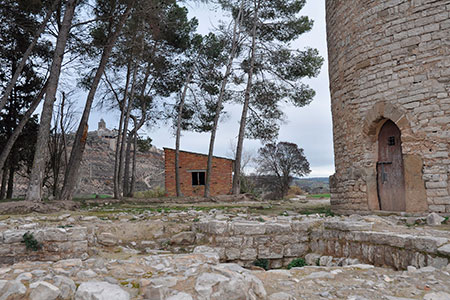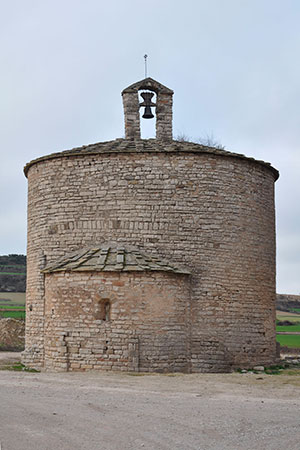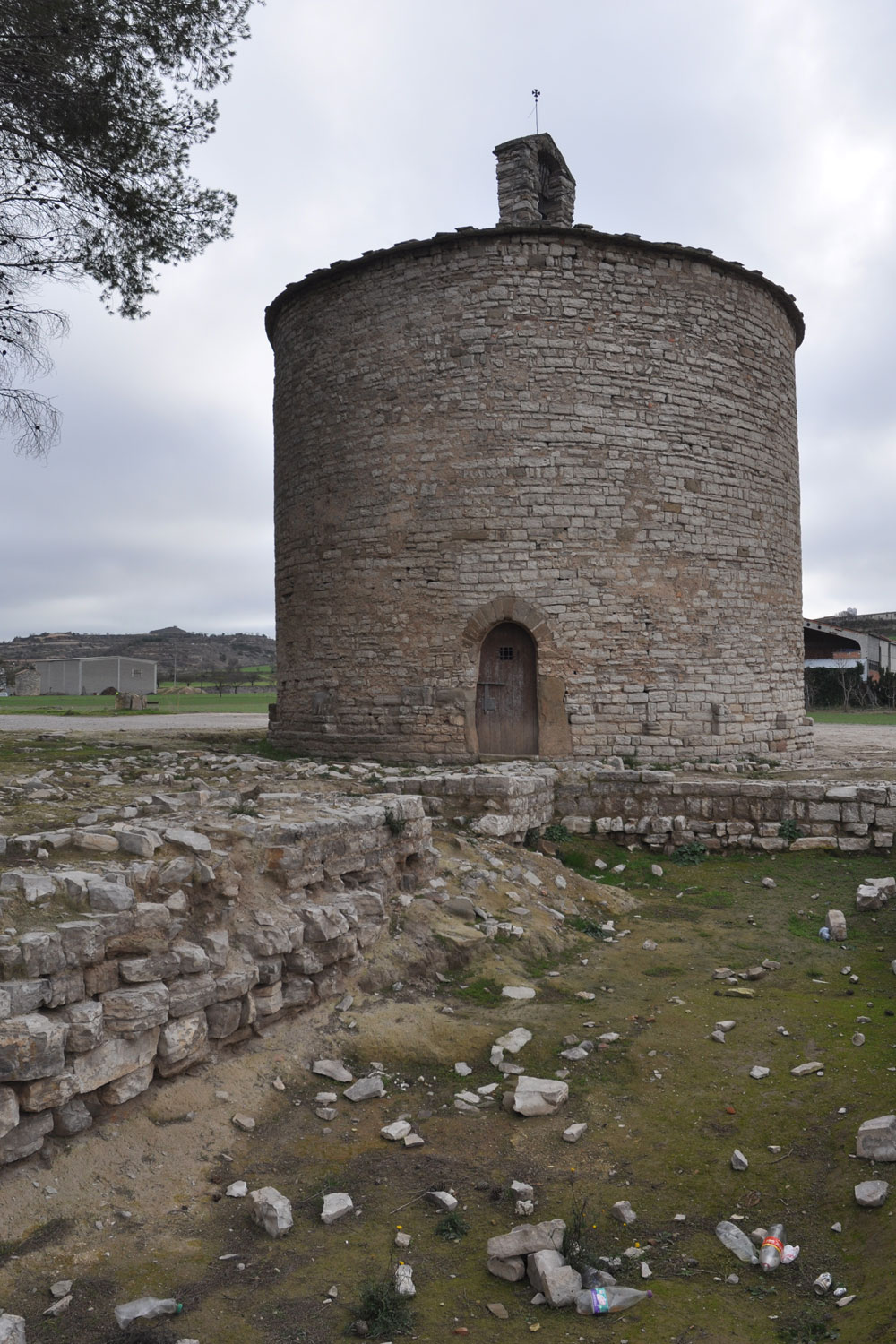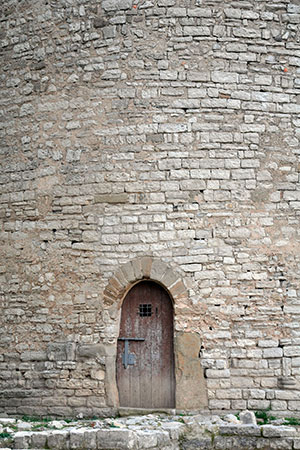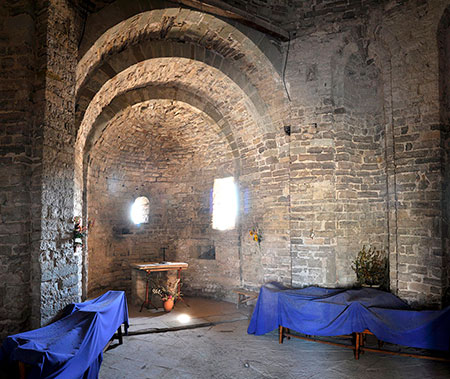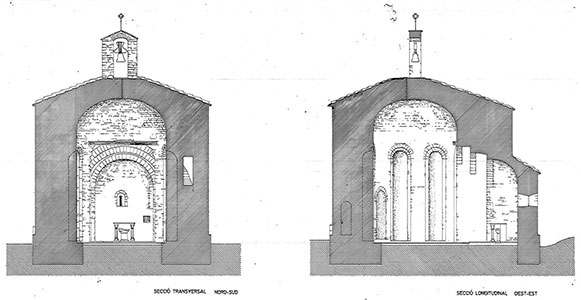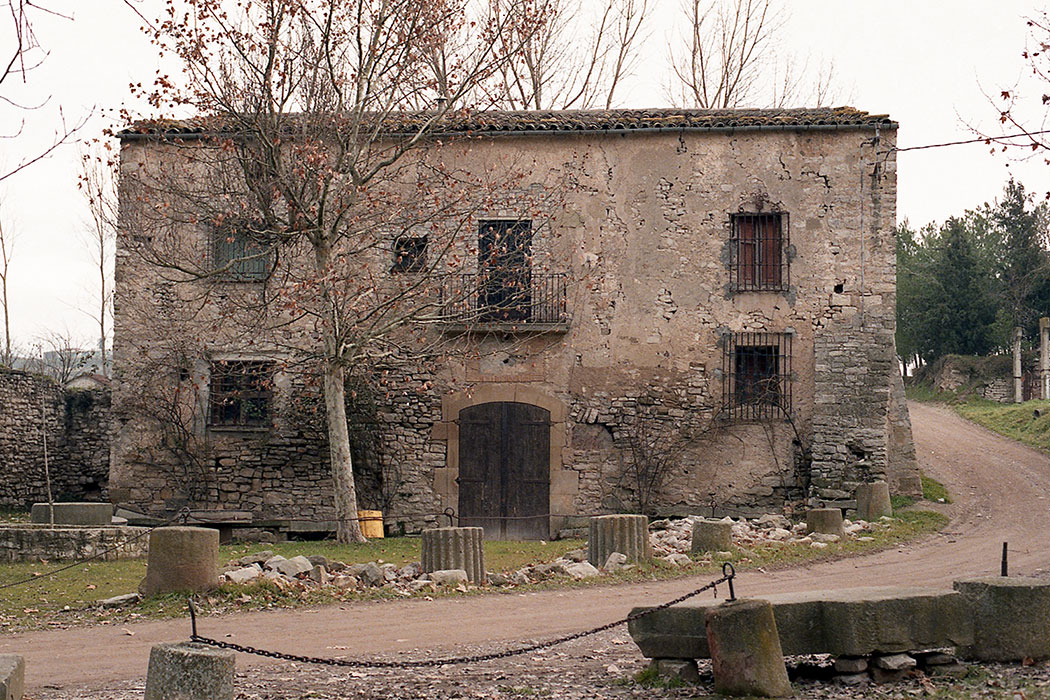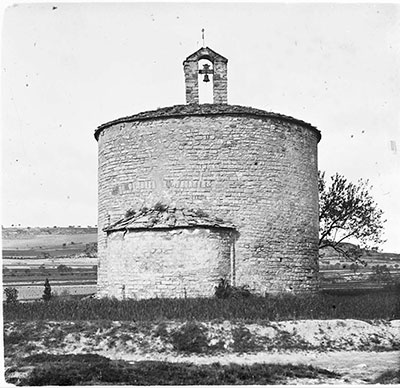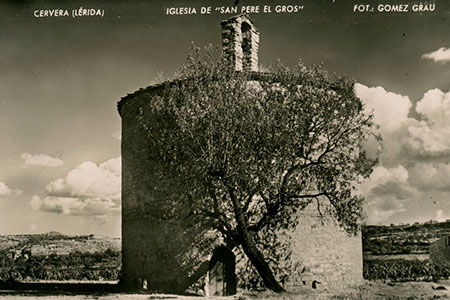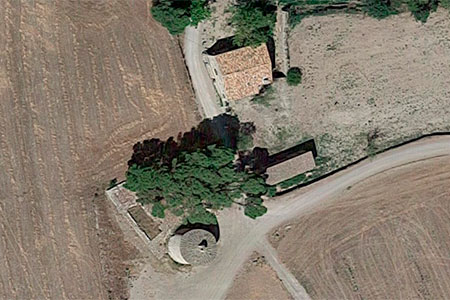The church of Sant Pere el Gros has been documented since the year 1072. It is located in a site inhabited since ancient times, southwest of Cervera, near the Ondara River and an important communication route. This territory, known as La Segarra, was definitively repopulated shortly before, in the mid-11th century. Until then, these lands were a transitional zone between the Muslim and Christian worlds. In this repopulation process, alongside the comital powers, the Church also played an active role through the bishoprics and major monastic institutions.
In 1081, Guillem de Cervera and his wife Arsendis donated the church of Sant Pere el Gros, along with its adjacent cemetery, to the Benedictine monastery of Santa Maria de Ripoll (Ripollès). A papal bull issued by Pope Urban II in 1097 mentioned this cell of Sant Pere among Ripoll’s possessions. Over time, Sant Pere el Gros acquired various properties in Cervera and the surrounding area, such as the castle of Nalec, which was donated to the priory in 1088 by Arsendis herself, who had also contributed to the monastic foundation. The priory experienced a period of prosperity during the following centuries until the mid-14th century, when it began to decline. A land terrier, or capbreu, was compiled during this later period, listing the various assets held by the priory at the time.
During the second half of the 14th century, the priory was gradually abandoned as a monastic institution. Its properties were progressively liquidated, and the prior became merely the local administrator. By the mid-15th century, it no longer carried out any monastic activity and had become a simple possession of Ripoll. During the War of the Spanish Succession, the site fell into ruin, although there is evidence that remnants of the cloister and other structures were still standing at that time, later disappearing gradually. Today, only the church remains visible, a rare example of a circular floor plan. The other buildings, of which only the foundations survive, have been excavated and studied. Slightly apart from the main site is the Grau Mill, which also belonged to the priory.
- BERGÉS, Carme; RIVERA, F. Xavier (2013). L’antic priorat de Sant Pere el Gros de Cervera. Participació del Museu Comarcal de Cervera en el seu estudi i posterior intervenció arqueològica. Grup de Recerques de les Terres de Ponent
- CORTS, Josep (1723-40). Estado antiguo y moderno de la ciudad de Cervera. Manuscrit. Arxiu Comarcal de la Segarra
- DURAN I SANPERE, Agustí (1977). Llibre de Cervera. Barcelona: Curial
- GARRABOU I PERES, Montse (1984). Sant Pere Gros a través de dos documents dels segles XI i XII. Miscel·lània Cerverina
- GAVÍN, Josep M. (1987). Inventari d'esglésies. Vol. 20. Segarra, Urgell. Barcelona: Arxiu Gavín
- PUIG I CADAFALCH, J. (1911). Arquitectura romànica a Catalunya. Vol. 2. Barcelona: I. Estudis Catalans
- RIVERA SENTÍS, F. Xavier (2009). Un capbreu del monestir benedictí de Sant Pere el Gros: 1341-1368. Miscel·lània Cerverina
- RIVERA SENTÍS, F. Xavier (2010). L'antic priorat de Sant Pere el Gros. Estudi històric i documental. Cervera: Museu Comarcal de Cervera
- SABATÉ, Flocel; RAMOS, Maria-Lluïsa (1997). Sant Pere Gros. Catalunya romànica. Vol. XXIV. El Segrià, les Garrigues, el Pla d’Urgell, la Segarra, l’Urgell. Barcelona: Enciclopèdia Catalana
- VILLANUEVA, Jaime (1821). Viage literario a las Iglesias de España. Vol. IX. Valencia: Oliveres
